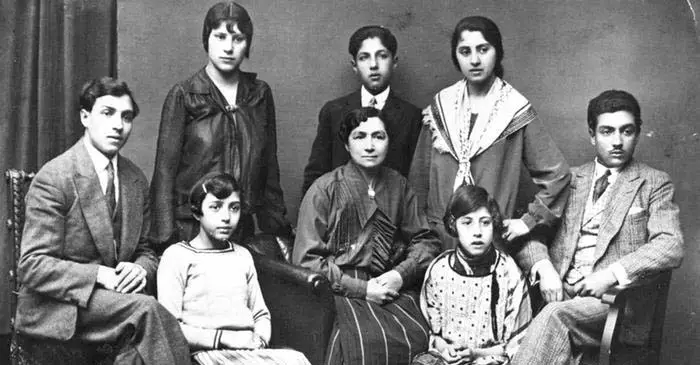The Top 5 European Countries with the Highest Gypsy Roma Population
| Country | Roma Population | Percentage of Population | |
|---|---|---|---|
| 1 | Turkey | 2,750,000 | 3.71% |
| 2 | Romania | 1,850,000 | 8.56% |
| 3 | Bulgaria | 750,000 | 9.74% |
| 4 | Spain | 725,000 | 1.60% |
| 5 | Russia | 720,000 | 0.51% |
 Special Report
Special Report
What you'll learn in this report:
- Origins of the Gypsy people.
- Gypsies in the United States.
- Why these top 5 numbers are a best guess.
And much, much more...
Where did the Roma - Gypsy People Come from?

The name "Gypsy" may have come from the word "Egyptian" as the Roma people were mistakenly believed to have come from Egypt. Although many Roma use the name themselves, in modern times the name "Gypsy" is considered to be an ethnic slur. The term "Roma" or "Romani", is derived from the Romani word for a man/person and is the culturally accepted name for the Roma people. "Roma" was officially self-designated at the first Romani International Congress which was held in Orpington, England in 1971. It is now generally accepted by scholars that the Romani people of Europe were a travelling or nomadic people descended from groups which left Northern India around 1,500 years ago and began arriving on the territory of today's European Union in or around the 14th century. Today, an estimated 12 million Roma live in continental Europe, a large proportion of them in the European Union. Upper estimates by some researchers for the Roma population in Europe are over 16,000,000.
Immigration to North America
The population of the Roma people in the United States is estimated to be around one million. The Roma people started immigrating to the United States from Europe in the early 1800's, mainly in the West and Southwest part of the U.S. Many were escaping discrimination and racial prejudice with a large population coming from Eastern Europe. Los Angeles, San Francisco, New York, Chicago, Boston, and Atlanta have the largest Roma populations in the United States. California is the state with the highest population of Roma Gypsies.
The Roma have faced resettlement throughout their history and the United States has been no exception. Prior to the events of 11 September 2001, the United States resettled several thousand Roma from Bosnia, including Roma from Bosnia, threatened with forced return to Bosnia by, in particular, the German Government. The United States also resettled several hundred Roma from Kosovo who had secured temporary protection in the former Yugoslav Republic of Macedonia (FYROM).
Canada has provided refugee status to large numbers of Roma from Central and Eastern Europe, particularly from the Czech Republic and Hungary. However Canada also re-imposed visa requirements for Hungarian citizens, in order to stop Roma from migrating from Hungary to Canada, and discussions about lifting the visa requirement centred primarily around "seeking guarantees that Roma will not migrate to Canada". Following the abolition of the visa regime for Czech citizens in Canada in 2007, several hundred Roma from the Czech Republic have again sought asylum in Canada.
Roma Discrimination and Poverty
Historically, throughout Europe and indeed the world, the Roma people have faced racism, discrimination and social marginalization. Today, the Roma are the largest ethnic minority in Europe and are considered to be one of Europe’s most deprived and disenfranchised minority groups. 80% of European Roma live below the poverty line, and one in every three Roma lives in housing without access to fresh tap water. One in ten Roma live in housing without electricity.
Every third Roma child lives in a household where a family member went to bed hungry at least once in the previous month; and 50 % of Roma between the ages of six and 24 do not attend school. In 2016, employment for Roma aged 20-64 years was 43%, which was well below the EU average of 70%. The situation of young people among the Roma is substantially worse: on average, 63% of Roma aged 16-24 were unemployed. Portugal has the lowest rate of Roma unemployment in Europe at 52%, a decrease from 79%. (A.)
The Trouble with Estimating Roma Populations
There is considerable debate over the actual size of the Roma population in Europe. This debate over the size of the Roma population is a direct consequence of the lack of clarity regarding Roma identity, as it makes counting the Roma difficult or even impossible. The community is also averse to any census that attempts to record their population, so there’s no definitive Roma population statistic available to researchers (even our top 5 list above is an estimate) When it comes to Roma population we can only speak in estimates and estimates indicate that between 6.8 and 8.7 million Roma live in Europe.
A number of countries in the OSCE region (Organization for Security and Cooperation in Europe) are likely or certain to have Romani or related communities numbering over 100,000. These include Bulgaria, Hungary, Romania, Serbia, Slovakia, the former Yugoslav Republic of Macedonia, the United States, Russia, the Czech Republic, Italy, Spain, France, the United Kingdom, Turkey, Greece, Ukraine, Germany, Albania, Moldova and possibly others. Of these, the following have Romani populations of possibly or certainly more than 5 per cent of the population as a whole: Bulgaria, Hungary, the former Yugoslav Republic of Macedonia, Romania, Serbia and Slovakia. In fact, in Bulgaria, Romania and Slovakia there are Romani communities possibly approaching 10 per cent of the general population. 68% of the Roma European population, live in Central and Eastern Europe and the Balkans.
Recent Roma Migration
In recent years Romanian Roma have migrated especially, although not only, to those countries with Latinate national languages similar to Romanian: namely Italy, Spain and France. In Spain and France they join Romani communities of several hundreds of thousands - over half a million in the case of Spain - although again not comprising anywhere near the percentage total of the six countries mentioned above. Roma make up around 0.64 per cent of the general population of France and 1.60 per cent of the population of Spain. There is no reliable statistical data on Romani migrants in the United Kingdom. Possible data sources, such as the Worker Registrations Scheme, document nationality, but not ethnicity.Top 5 Special Reports Sources:
A. FRA - European Union Agency for Fundamental Rights. (2016). Second European Union Minorities and Discrimination Survey. Roma – Selected findings.
Sources: Council of Europe Roma and Travellers Division.
List Notes: Data is the European countries with the highest Gypsy Roma Population for the year 2021.

